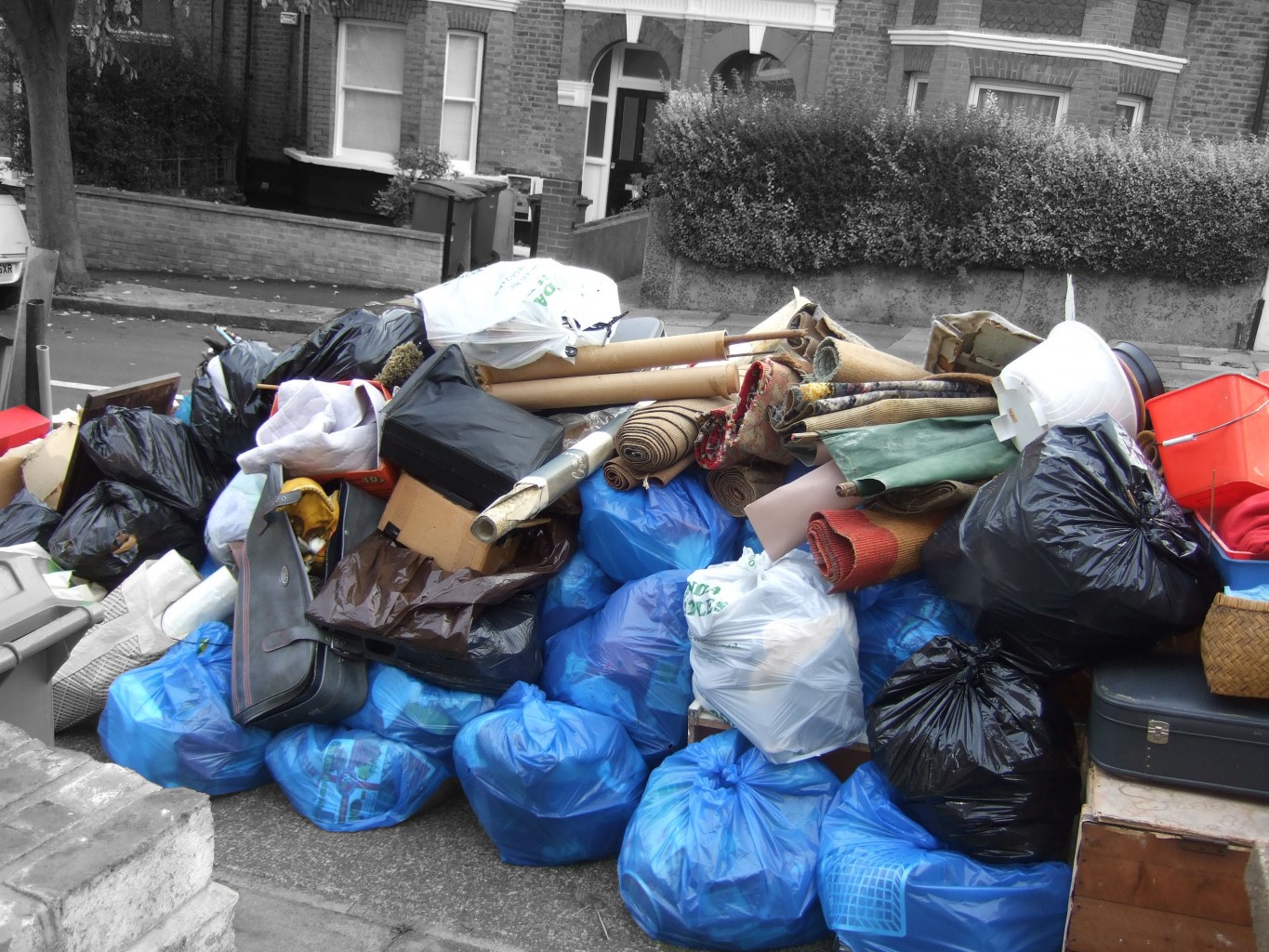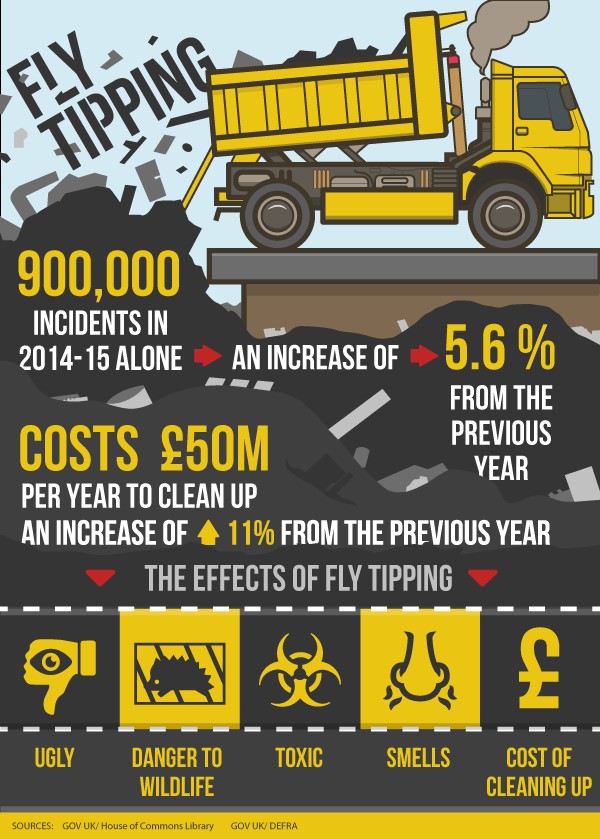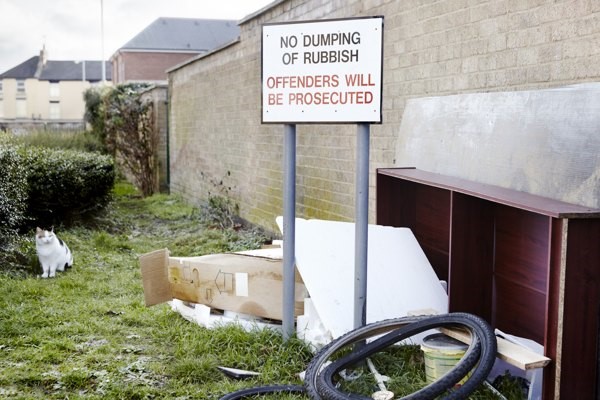Posted on October 7, 2016 in Waste Solutions
The Illegal Waste Polluting Our Countryside

Nowadays, beautiful green spots are cursed by inconsiderate and selfish individuals dumping their rubbish – everything from household waste, to cars and even coffins have been found. It’s time councils and law enforcement bodies toughened up their act, and ensured people were more aware of fly-tipping’s disastrous effects, so that in the near future we can see a much cleaner Britain.
Page Contents
What is fly-tipping?
Fly-tipping is the illegal dumping of waste and rubbish on public and private land, which isn’t licensed to accept waste.
Parliamentary documents stated the most common place for fly-tipping is on motorways, probably due to the high speed limits which means it is unlikely anyone will stop their car to inquire what the offenders are doing. It is also common in quieter areas such as country roads, farms, woodland and alleyways – all areas out of the public eye as to reduce the risk of getting caught.
It can be from building and construction waste to larger domestic items such as sofas or fridges, and sometimes more bizarre items can be found. A North London council found a coffin and 2 live turtles that had been sadly dumped.
The harms of fly-tipping are abundant. It’s downright unsightly, it can block off roads and paths, be a danger to wildlife, cause bad smells and toxic fumes and the cost to clear it up can be great.
According to the BBC, it costs councils in England more than £50m per year to reverse the effects of fly-tipping. It also undermines legitimate waste collection businesses who lose out on profits due to this illegal DIY waste dumping.
Local authorities dealt with a total of 900,000 incidents of fly-tipping in 2014/15, an increase of 5.6% since 2013/14.

Why do people do it?
It has been argued that council cutbacks have meant councils are under-resourced to deal with larger scale waste collection.
Normal household waste is paid for through council tax and collected by the local council. Any other rubbish has to be paid to be removed through a landfill tax (disposal fee), or else take it to a licensed waste collection spot yourself. Interestingly, a large proportion of fly tips involve household waste, which further confuses the incentives for doing it.
The landfill tax is applied by material and weight, hence why fly tipping is often composed of larger and heavier items, such as furniture. Lower rate is inactive waste such as rocks and soil, and the upper rate is everything else.
See more regarding fly tipping: https://www.gov.uk/green-taxes-and-reliefs/landfill-tax
Legality
Fly-tipping is a criminal offence punishable by a fine of up to £50,000 or 12 months’ imprisonment if convicted in a Magistrates’ Court.
The offence can attract an unlimited fine and up to 5 years’ imprisonment if convicted in a Crown Court.
There are also a number of other possible penalties, including fixed penalty notices between £150-£400 (introduced in England from 9 May 2016); and seizing a vehicle and/or its contents because of suspected involvement in fly-tipping.
See more regarding the legality of fly tipping: http://researchbriefings.files.parliament.uk/documents/SN05672/SN05672.pdf

Solutions
Incidents are up 16%. Thankfully more is being done, but more progress can be made to lessen these incidents.
Here are a few solutions:
- Councils emptying bins more often, and accepting larger loads of rubbish.
- Awareness of who to contact if they have large appliances to get rid of.
- More awareness of where the local waste collections are, and how to get to them.
- More awareness of punishment – posters/ leaflets etc. could be put up and sent round to warn people of the harsh penalties they could receive.
- More surveillance to deter and catch offenders
- Introduce community led projects to help clear large loads of rubbish
- Harsher penalties – rather than just fines, perhaps community service would be a more effective punishment, especially if the fly-tippers are made to clear up rubbish, and can see first-hand the trouble it causes.
- Named and shamed – ‘wanted’ photos put up to try and catch offenders. This has already been done by Rhondda Cynon Taf council in Wales, where they put up photos of offenders on their council website.
A lighter approach was undertaken by the charity, Hubbub, which worked with six primary schools and one secondary to create tree art to deter potential fly-tippers in the Forest of Dean (handled in excess of 800 incidents in one year, costing a total of £91,000). The project was named ‘Communitrees’. Faces were modelled onto trees of 16 sites, aiming the give people the feeling of being watched. They did see a slight reduction in incidents.
This type of method has been used before in Newcastle, to reduce incidents of bike stealing. It was also used in Rotterdam where 10,000 ‘eyes’ were painted in public places, leading to a fall in robberies and anti-social behaviour.
Littering laws have also been toughened – littering has become so commonplace and it seems many don’t think of it as such a big deal. Perhaps the new £150 fine will make people think twice about littering – a doubling of the previous fine, and keep our streets cleaner.
Only time will tell if these harsher penalties will make a difference. The increase in the purchasing of cheap furniture and goods means we are chucking more out each year. It is the attitudes that need to be tapped into and transformed, as no one should have a clean conscience when illegally dumping their trash.
For information on our junk removal services please visit Protech Waste Solutions.
Categories
- Building Maintenance
- Cleaning
- Electrical
- Gardening
- General Info
- Our Service
- Pest
- Security
- Uncategorized
- Waste Solutions
Archive
- April 2024
- March 2024
- February 2024
- January 2024
- December 2023
- November 2023
- August 2023
- April 2023
- February 2023
- January 2023
- December 2022
- November 2022
- October 2022
- September 2022
- August 2022
- July 2022
- June 2022
- May 2022
- April 2022
- March 2022
- February 2022
- January 2022
- December 2021
- October 2021
- September 2021
- August 2021
- July 2021
- June 2021
- May 2021
- April 2021
- March 2021
- February 2021
- January 2021
- December 2020
- November 2020
- October 2020
- September 2020
- August 2020
- July 2020
- June 2020
- May 2020
- April 2020
- March 2020
- February 2020
- January 2020
- December 2019
- November 2019
- October 2019
- September 2019
- August 2019
- July 2019
- June 2019
- May 2019
- April 2019
- March 2019
- February 2019
- January 2019
- December 2018
- November 2018
- October 2018
- September 2018
- August 2018
- July 2018
- June 2018
- May 2018
- April 2018
- March 2018
- February 2018
- January 2018
- December 2017
- November 2017
- October 2017
- September 2017
- August 2017
- July 2017
- June 2017
- May 2017
- April 2017
- March 2017
- February 2017
- January 2017
- December 2016
- November 2016
- October 2016
- September 2016
- August 2016
- July 2016
- June 2016
- May 2016
- April 2016
- March 2016
- February 2016
- January 2016
- December 2015
- November 2015
- October 2015
- September 2015
- August 2015
- July 2015
- June 2015
- May 2015
- April 2015
- March 2015
- February 2015
- January 2015
- October 2014
- May 2013
- April 2013
- November 2011
- September 2011
- June 2011
- January 2011
- December 2010
- November 2010

